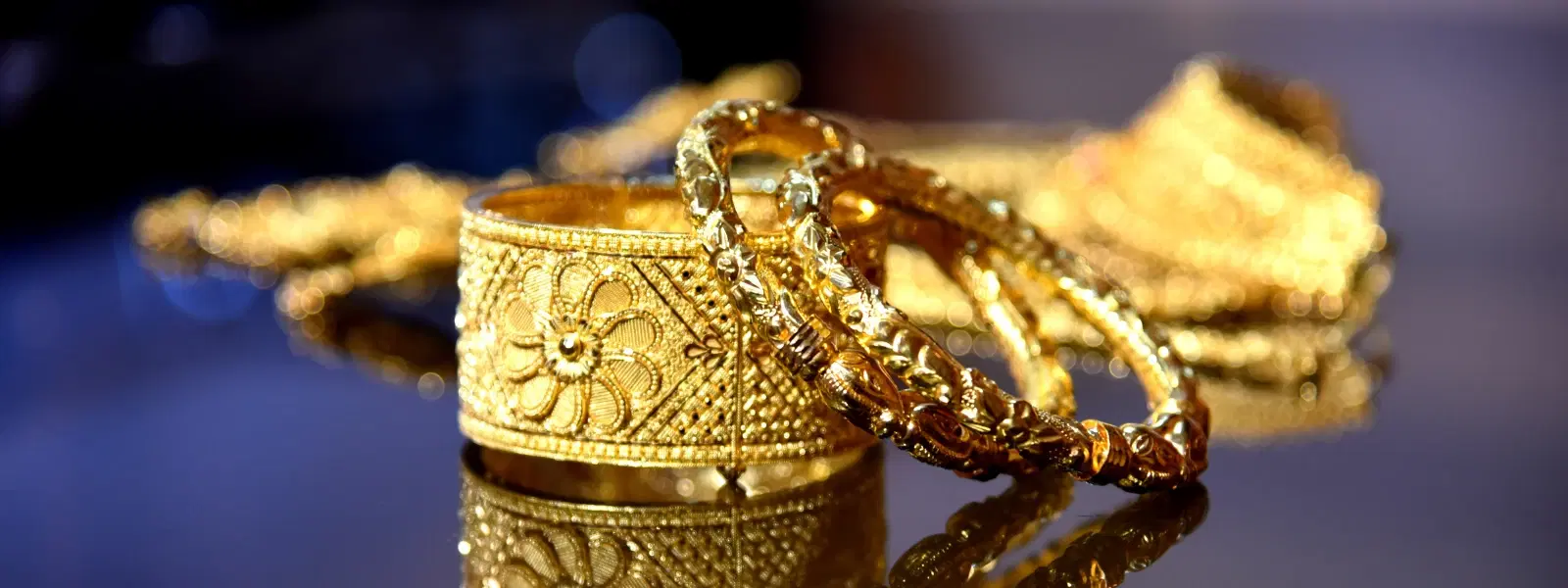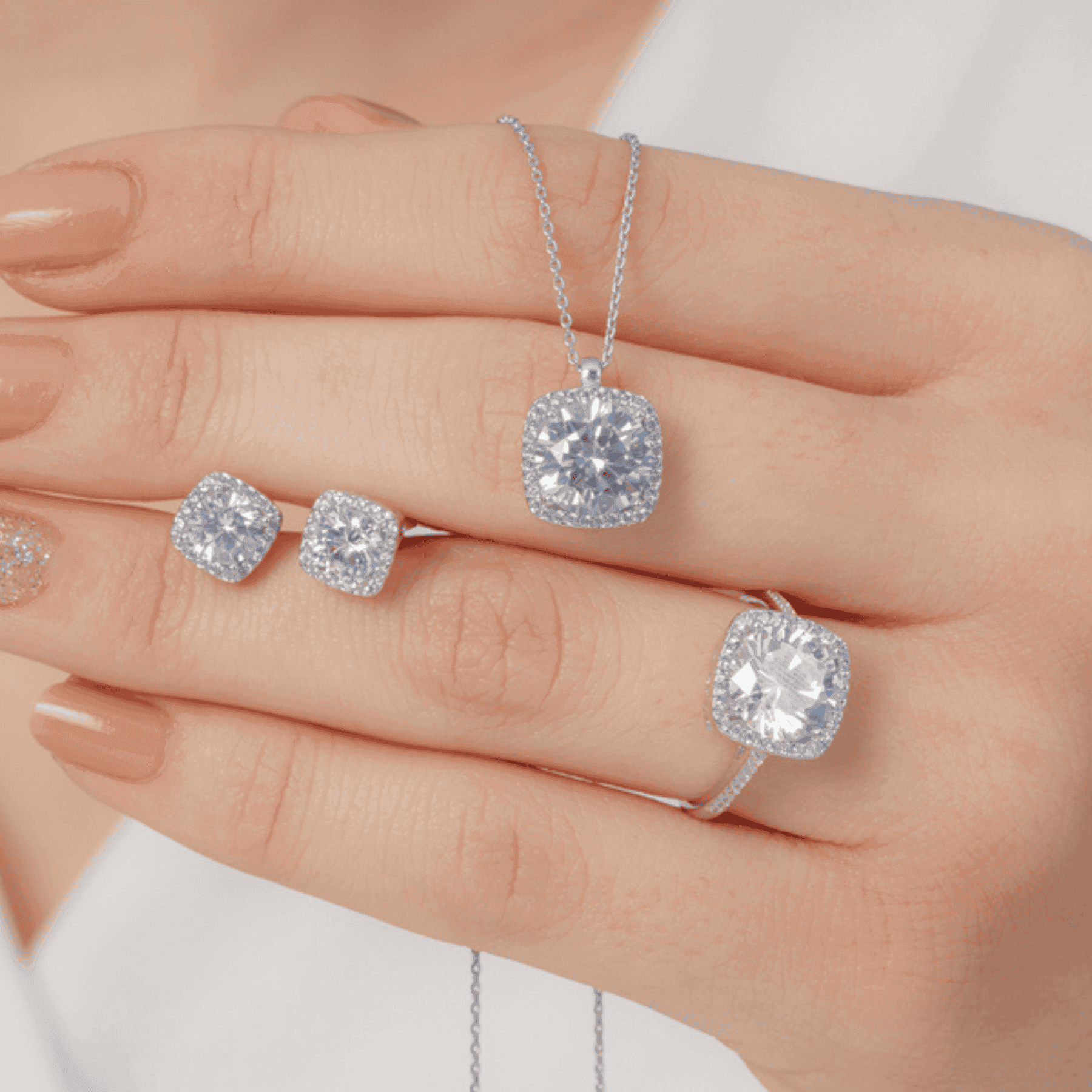
Watches & Jewellery
•04 min read

Durability is a key consideration for jewelry that is meant to be worn daily. Your jewelry not only endures daily wear but also expresses your unique style and personality. In this blog post, we take a dive into the world of platinum vs white gold durability to help you understand which metal performs better over time. You will learn about the unique qualities of each metal, how they compare in strength and longevity, and what proper care looks like for both.
Platinum is a naturally occurring precious metal known for its rarity and density. It is highly valued for its hypoallergenic properties, making it ideal for individuals with sensitive skin. Due to its minimal alloying, platinum jewelry care is straightforward, as it rarely loses material when scratched. Its weight and density also mean that platinum retains its volume, solidifying its reputation for superior durability of precious metals.
Dense and heavy
Hypoallergenic, perfect for sensitive skin
Resistant to tarnishing and corrosion
White gold is an alloy created by mixing gold with metals such as palladium or nickel to achieve a silvery-white hue. It usually receives a finish of rhodium plating to boost its shine and protect it from wear. Although white gold is lighter in weight compared to platinum, its durability comes with maintenance demands like re-plating over time to keep its luster intact.
Lighter in weight
Often needs rhodium plating for lasting shine
Generally more affordable than platinum
Platinum stands out in the realm of durability. When you examine platinum vs white gold for rings or watches, the differences become clear. Platinum does not lose material even when scratched; it securely displaces the metal, preserving its brilliance and mass. This quality makes platinum jewelry longevity a significant benefit for everyday wear and pieces passed down through generations.
Long-lasting, withstands daily wear and tear
Maintains weight and volume over time
Superior platinum vs gold scratch resistance
White gold, though beautiful, tends to be softer than platinum. Regular exposure to impacts can lead to minor dents and scratches. One of the challenges with white gold is that its protective rhodium plating gradually wears off, which can reveal a slight yellow tint underneath. This aspect of white gold wear and tear means that regular maintenance is necessary to keep it looking its best.
Rhodium plating wears off over time
Requires periodic re-plating for a consistent look
Softer metal may show signs of damage with heavy use

For those who desire jewelry that stands the test of time, platinum is a clear choice. Its inherent durability makes it perfect for engagement rings, wedding bands, and even watches. The high density of platinum ensures that even daily wear does not compromise its integrity. This is why many consider it ideal for items that are designed to be heirloom pieces or those that feature intricate design work.
Ideal for active lifestyles and delicate engravings
Maintains its pristine look despite repeated use
Shows minimal signs of damage over time
White gold is no less popular and can be a great choice when paired with the right design and care. Its lighter weight makes it perfect for more intricate and delicate styles. However, the need for ongoing maintenance, such as re-plating, means it might be better suited for jewelry that is worn occasionally rather than daily. With proper white gold maintenance tips, its appearance can be preserved for many years.
Suitable for lightweight, flexible designs
Requires regular upkeep to preserve appearance
Balances affordability with style versatility
One of the most appealing aspects of platinum is the ease of maintenance. Due to its high density and resistance to wear, simple cleaning with mild soap and water is usually enough. Caring for platinum jewelry does not require extensive repairs, which makes it highly desirable if you value longevity in jewelry applications such as metal durability for watches.
Clean with mild soap and water
Avoid abrasive chemicals
Store separately to prevent scratches
Maintaining white gold involves a bit of extra effort. The rhodium plating that enhances its white gold strength and shine typically benefits from re-plating every 1-2 years. This consistent care helps manage the natural white gold wear and tear and ensures the metal retains its high-fashion appeal for everyday jewelry collection pieces.
Schedule re-plating every 1-2 years
Use soft cloths and gentle cleaners
Avoid chemicals that can reduce the plating’s integrity
Insight Corner: Platinum Wins the Scratch Resistance Competition
Platinum is generally recognized to be significantly denser than white gold, which contributes to its superior scratch resistance. Even when micro-scratches occur, platinum maintains its metal volume, a key benefit for those evaluating platinum durability comparison against white gold.

When you weigh the cost factor against durability of precious metals, platinum is generally priced higher than white gold. However, its longevity and reduced need for frequent maintenance often justify its higher cost. While white gold may be attractive due to its affordability, the periodic expense of re-plating can add up over time. In the debate of platinum vs white gold for rings and watches, lifestyle and budget are important factors to consider.
Ultimately, your choice between platinum and white gold comes down to personal lifestyle and design preferences. Platinum offers unmatched durability, making it the go-to option for individuals who lead active lifestyles and need a metal that stands up to everyday wear. On the other hand, white gold provides a lighter feel and more flexible design options, though it comes with the responsibility of regular upkeep. This comprehensive review of platinum vs white gold durability helps ensure you find a balance between aesthetics and practicality.
Yes, platinum is generally more durable and better suited for daily wear, offering longer-lasting resilience compared to white gold.
Platinum is known for its strength and hypoallergenic benefits, while white gold, although requiring more maintenance, may be preferred for its lighter feel and affordability.
White gold is alloyed with other metals and plated with rhodium to achieve its white finish; this plating wears off over time due to regular wear and tear.
The main drawback of platinum is its higher price and heavier weight, which may not appeal to everyone.
Durable metals like platinum ensure that watches maintain their structure and appearance over time, making them ideal for daily wear and heirloom pieces.
In summary, while platinum boasts exceptional durability and longevity, especially for heavy daily use and valuable heirloom pieces, white gold offers a lighter, more affordable alternative that requires a bit more maintenance. By understanding the differences in platinum durability comparison, white gold strength, and overall care routines, you can choose the metal that best aligns with your style and lifestyle. Discover curated pieces that not only last but also reflect responsible and innovative fashion, embracing individuality and sustainability in your jewelry choices.